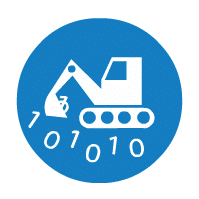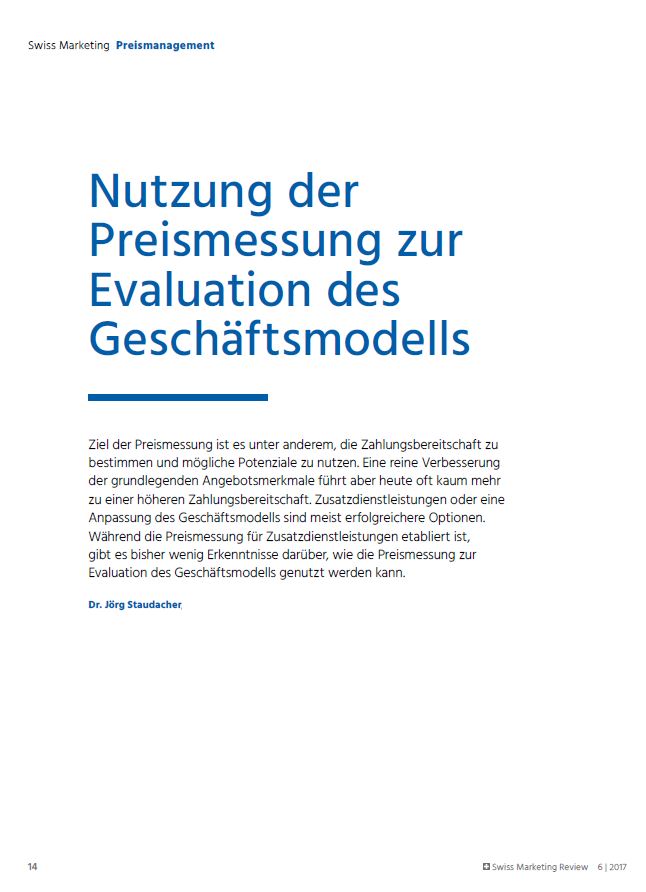In the vast majority of industrial companies, prices are determined unsystematically and according to the cost-plus and competition method. As a result, profit potential falls by the wayside in many companies. Customer-oriented price management in industry makes it possible to determine the optimum willingness to pay, the weighting of the individual value drivers and possible segmentation. Our client wanted to align its price management in a customer-oriented way and, in doing so, build up price management skills and strengthen sales in this area.
A price management process was developed in collaboration with CustomersX®. The various stakeholders were involved and price management was assigned to Sales. Price measurement skills were established and practiced using the example of a pilot. In addition, a pricing strategy and implementation planning were developed. As a result, the industrial company was able to increase profits by 8% in the first year.
At a glance

20%
Customer Value-based Decision Making

20%
Customer-centric transformation

40%
Co-creation

20%
Customer Management
The full story on price management in the industry
It is always surprising how much companies invest in individual communication tools, but not in price management. Price management is the strongest lever here. Price management in the industry is usually faced with the challenge that the product range is usually very large, the individual offers are available in several variants and numerous services are offered. In comparison with scientific recommendations and popular publications, the impression can quickly arise that customer-oriented price management in the industry is hardly possible.
We use our DTC approach to establish customer-oriented price management. We often find that customer-oriented price management is reduced to the methods used to measure customers’ willingness to pay. And since not every method can be used for every company, confusion can easily arise. However, customer-oriented price management is not only aimed at willingness to pay and price elasticity (which are certainly at the core). It is also about determining the underlying value drivers and possible price differentiation options. This in combination with a customer value-enhancing system in discount management. Based on our price management consulting, we proceeded in four steps.
In a first step, the initial situation was analyzed comprehensively. The initial focus was on developing systematic price management and making price management the responsibility of the sales department. This quickly led to irritation that the sales department should determine the prices. But this change is the only way to make it clear to sales that the company’s goals can be achieved either through more volume or more systematic price management. This means that the sales team, in coordination with product management, must of course determine the optimal challenge for the coming year. This reduces resistance, as most sales teams need to strengthen their price management skills. The pricing strategy and a pricing system for the company were then determined in collaboration with all relevant departments. The main aim here is to secure the price positioning (brand strength) and identify potential conflicts of price differentiation at an early stage.
In a second step, the company’s employees received comprehensive training. Communication and the service area also need to be integrated into this training and not just focused on product management and sales. A customer survey was then conducted in order to underpin the general pricing strategy with customer insights. In addition, a lighthouse project was defined in order to demonstrate the concrete added value of the new price management skills right from the start of the project. Otherwise, price management in the industry can quickly get caught up in the daily grind.
In the third step, the pricing strategy for the company was optimized. To this end, customer insights from the customer survey (willingness to pay, price elasticities, value driver importance and different price segments) were compared with internal data such as customer value. This information was used, for example, to systematically increase cross-selling or the customer value of D and parts of C customers. The key finding in a customer-oriented price management project, and this was also the case in this project, is that terms were previously used in communication and sales that did not have such a strong impact on the customer’s willingness to pay. Customer-oriented price management can unfold its full power when the offer and communication are aligned with the value drivers from the customer’s perspective. This is where price measurement delivers the greatest added value for customers. In addition, a system for price differentiation according to customer value and an understandable pricing model were developed. As a result, the industrial company had a clear system for price management.
The final step was implementation support. This involved repeating the training courses on price measurement. A roadmap was developed on how to further develop price management in the company in the coming years and a price controlling system was established. In addition, a playbook was developed for the implementation of the pricing strategy and the lighthouse project. As a result, the company was able to increase its profit by 8% in the first year and is continuing to work on improving its profit.
In summary, customer-oriented price management in the industry offers great added value. However, it is not enough to simply implement a project and optimize the prices of individual offers. Price management must be established in the company and, above all, sales must be given much greater responsibility. This requires management to recognize the added value of customer-oriented price management in the industry and for sales to focus on increasing profits rather than turnover.
* We take confidentiality with our customers seriously. The name has been changed, the results are real.







